Ever wondered what’s on the menu for the big cats and reptiles of the Amazon? Well, let me tell you, capybaras are like the all-you-can-eat buffet of the rainforest. These oversized guinea pigs might look cute and cuddly, but they’re a prime target for a whole host of hungry predators.
The Capybara: Nature’s Rodent Supersize Meal
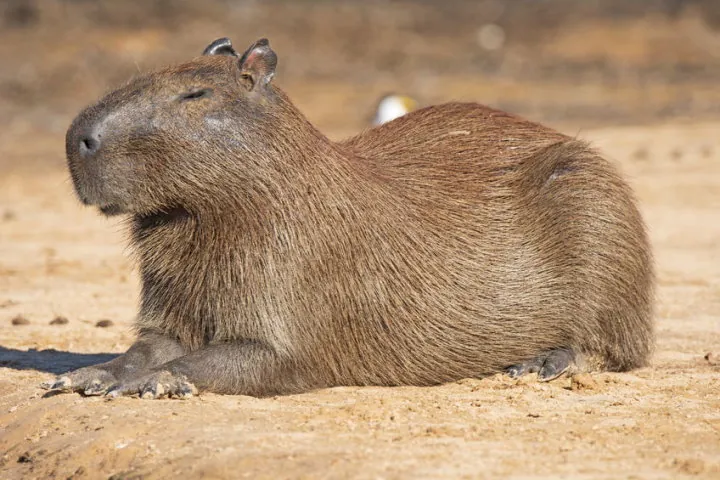
Before we dive into who’s chowing down on these guys, let’s talk about what makes capybaras such a tempting treat. Picture this: a 100-pound rodent, about the size of a large dog, just chilling by the water’s edge. That’s a capybara for you. They’re like the couch potatoes of the animal kingdom – big, slow, and always hanging out near the water.
Why Capybaras Are on Everyone’s Menu
- They’re big and meaty
- They’re not exactly speed demons
- They live in groups, making them easy to spot
- They’re predictable – always near water
Top Predators That Feast on Capybaras
1. Jaguars: The Apex Predator’s Favorite Snack
Jaguars are like the special forces of the rainforest. These big cats are built for the hunt, and capybaras are often their prime target. Here’s why jaguars love capybara takeout:
- Powerful bite: Jaguars can crush a capybara’s skull like it’s a grape
- Stealth mode: Their spotted coat lets them sneak up unnoticed
- Aquatic skills: Jaguars are great swimmers, so capybaras can’t escape in the water
Fun fact: Jaguars often drag their capybara catch up into trees. Talk about dinner with a view!
2. Anacondas: The Squeeze Play Specialists
Imagine being hugged so hard you pop. That’s basically what anacondas do to capybaras. These massive snakes are like living boas (pun intended), and they’re not picky eaters:
- Can swallow a whole capybara in one go
- Use their powerful coils to suffocate prey
- Ambush hunters, striking from the water or low branches
Pro tip: If you’re a capybara, don’t fall asleep near the water. That’s when anacondas love to strike.
3. Caimans: The Scaly Menace
Caimans are like alligators’ South American cousins, and they’ve got a taste for capybara. These reptiles are the ultimate opportunists:
- Lurk in the water, waiting for capybaras to come drink
- Can grow up to 13 feet long – that’s a lot of teeth!
- Use their powerful tails to drag capybaras into the water
Remember: For caimans, capybaras are like drive-thru – convenient and always available.
4. Harpy Eagles: Death from Above
You might think capybaras are safe from birds, but harpy eagles didn’t get the memo. These flying predators are no joke:
- Talons as big as grizzly bear claws
- Can lift prey equal to their own body weight
- Primarily target young or smaller capybaras
Imagine being a capybara and having to watch the sky and the ground. Talk about stress!
The Circle of Life: Why Predation Matters
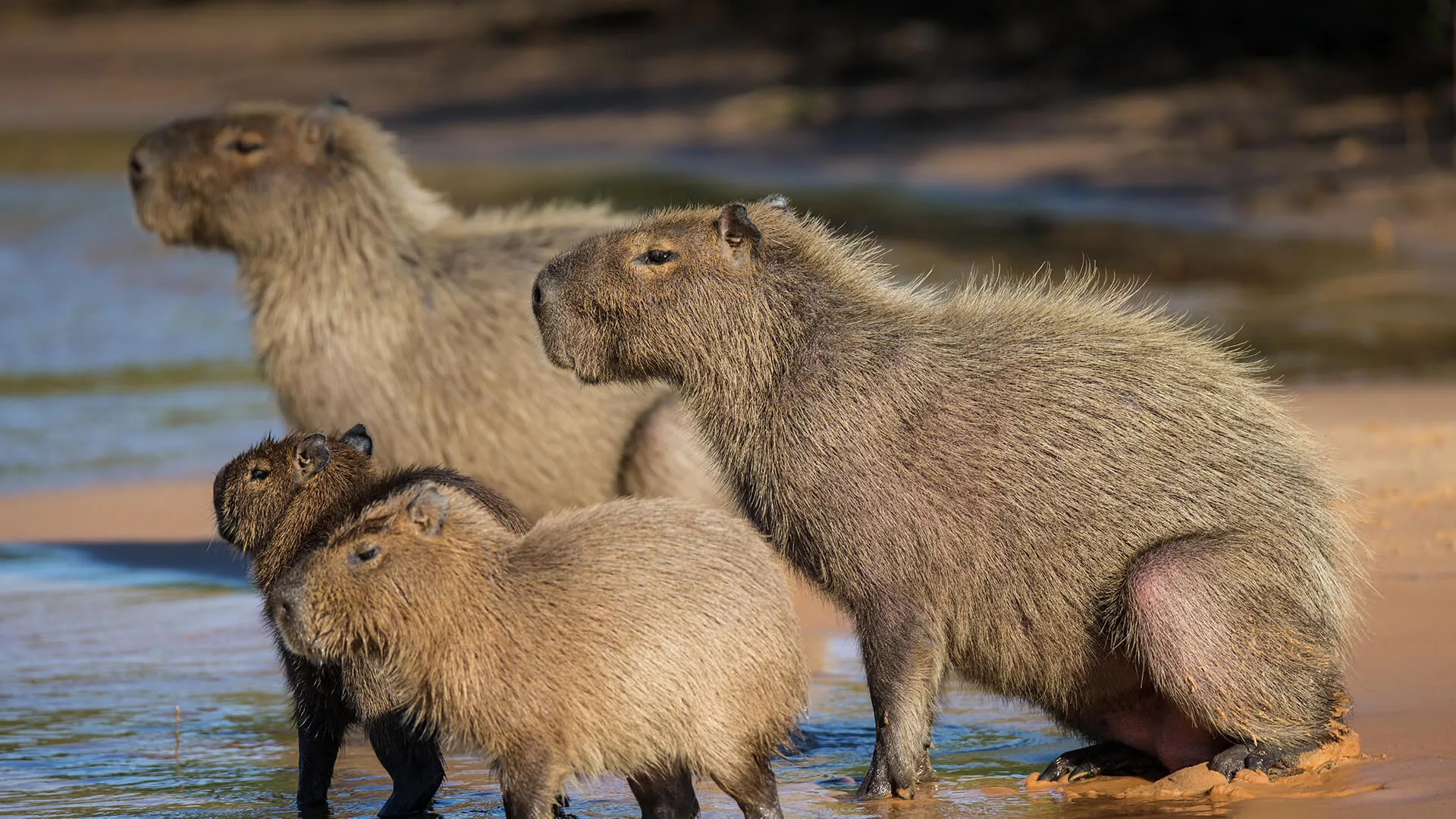
Now, you might be thinking, “Poor capybaras! Can’t we save them all?” But here’s the deal – predation is crucial for the ecosystem. It’s nature’s way of keeping things balanced. Without predators, capybaras would overrun the place, eat all the plants, and cause all sorts of chaos.
The Ripple Effect of Predation
- Population control: Keeps capybara numbers in check
- Natural selection: Stronger capybaras survive and reproduce
- Nutrient cycling: Predators spread nutrients through the ecosystem
- Biodiversity maintenance: Prevents capybaras from dominating the habitat
Capybara Survival Strategies: How They Stay Alive
Capybaras aren’t completely defenseless. They’ve got a few tricks up their furry sleeves:
- Safety in numbers: They live in groups of 10-20 individuals
- Aquatic escape: Excellent swimmers who can hold their breath for up to 5 minutes
- Vigilant sentries: Take turns watching for danger
- Vocal warnings: Use barks and whistles to alert the group
The Human Factor: Our Impact on Capybara Predation
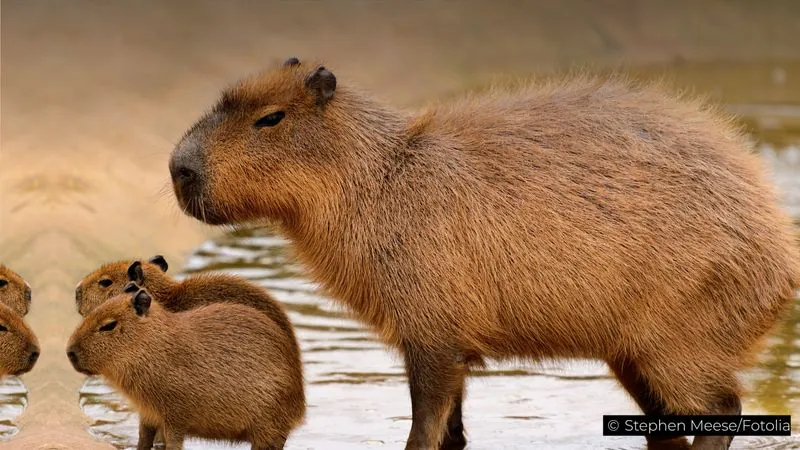
Let’s not forget about us humans. We’re changing the game for capybaras and their predators:
- Habitat loss: Less space means more concentrated predation
- Hunting: Some areas see capybaras as food or pests
- Climate change: Altering predator-prey dynamics
FAQs: Everything You Wanted to Know About Capybara Predation
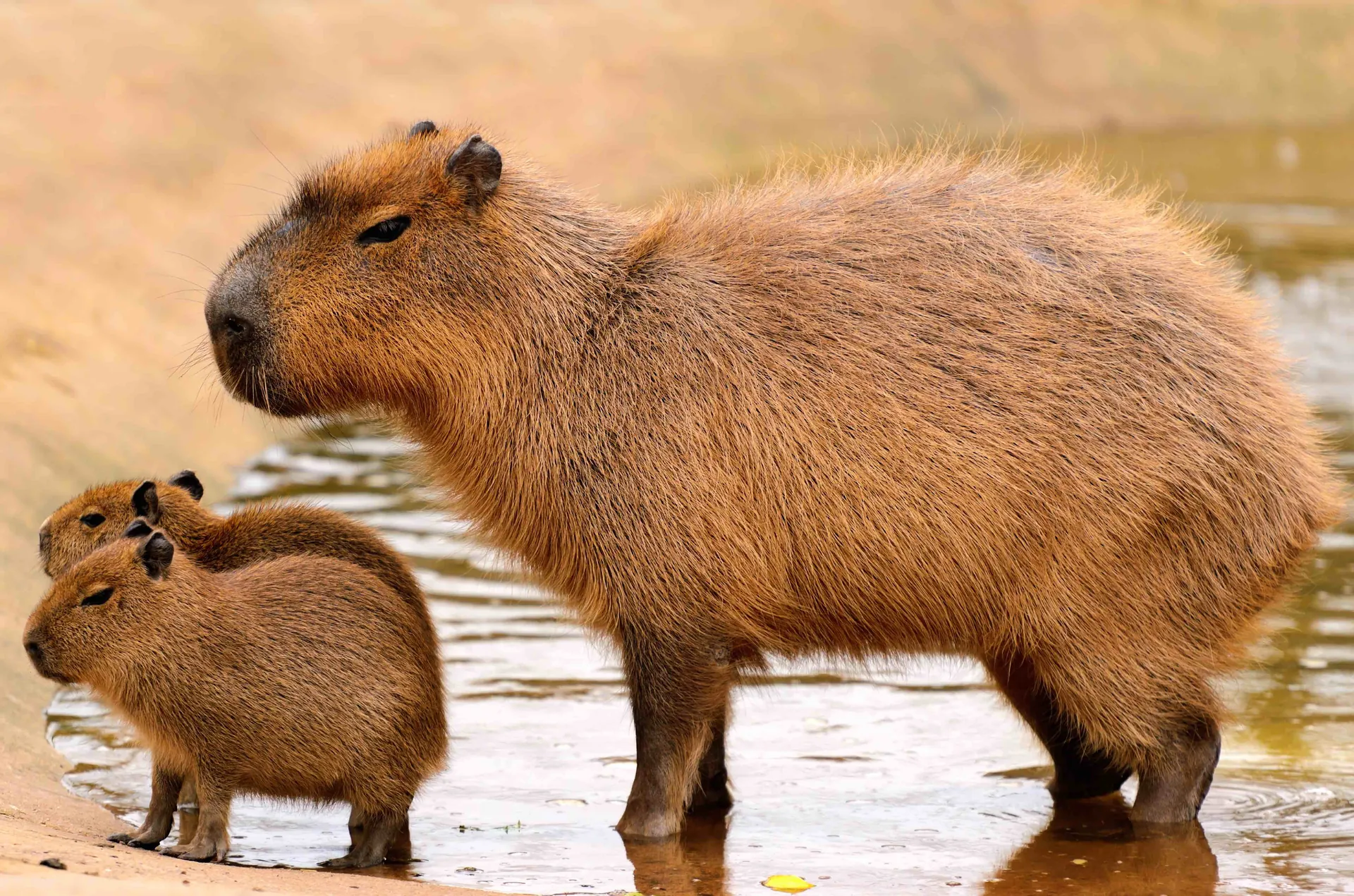
Q: Do capybaras have any natural defenses against predators?
A: While they’re not exactly ninja warriors, capybaras can swim fast and have sharp teeth for self-defense. Their best defense is their social structure and vigilance.
Q: Are baby capybaras more vulnerable to predation?
A: Absolutely. Young capybaras are smaller, slower, and less experienced. They’re prime targets for predators like ocelots and even birds of prey.
Q: Can capybaras outrun their predators?
A: In short bursts, yes. But they’re not winning any marathons. Their strategy is more about getting to water quickly than outrunning predators long-term.
Q: Do all predators hunt capybaras the same way?
A: Nope. Each predator has its own style. Jaguars ambush, anacondas constrict, caimans drag them into water, and eagles swoop from above.
Q: Are there any animals that capybaras are friends with in the wild?
A: While “friendship” might be stretching it, capybaras are known to tolerate birds that eat parasites off their fur. It’s more of a business arrangement than a buddy system.
The Bottom Line: Respect the Food Chain
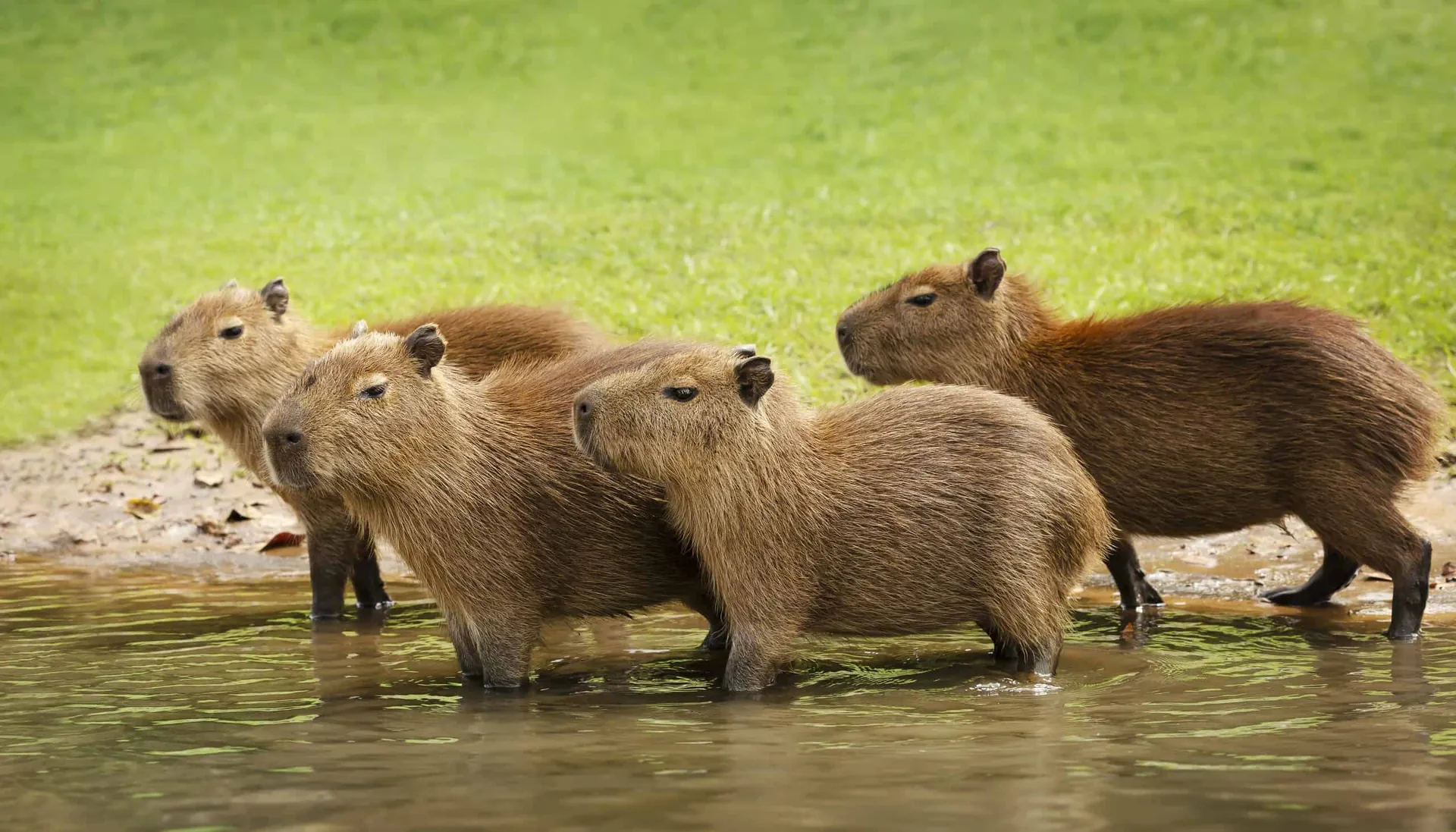
At the end of the day, capybaras play a crucial role in the tropical rainforest ecosystem. They’re not just cute and cuddly – they’re a vital link in the food chain. So next time you see a capybara lounging by the water, remember: it’s not all sunbathing and relaxation. These guys are constantly on the lookout, playing their part in the wild drama of survival.
Remember, in the rainforest, it’s eat or be eaten. And capybaras? Well, they’re often on the menu. But that’s just how nature rolls – keeping everything in balance, one capybara at a time.
